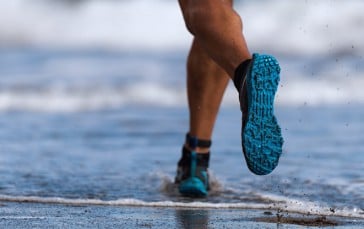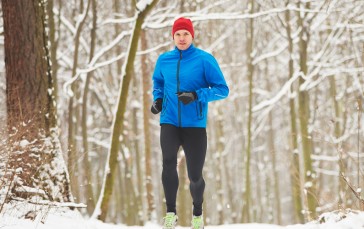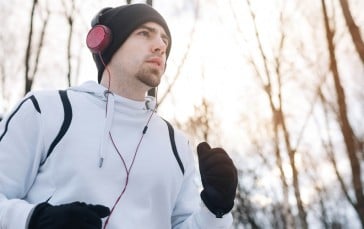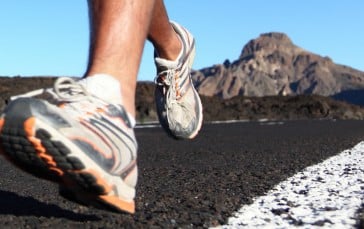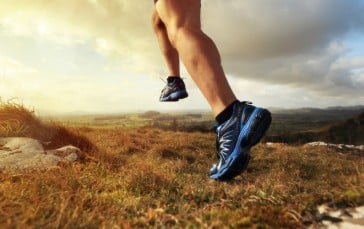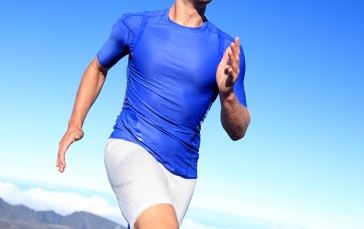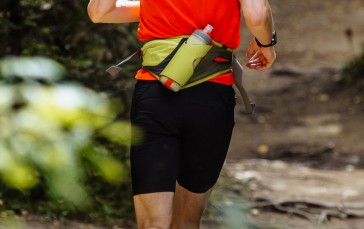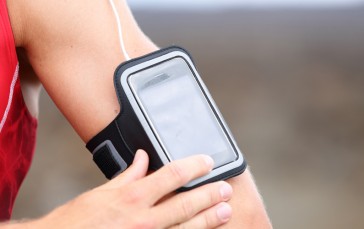Tips To Run Faster
Running is all about speed. Some people spend every spare moment they can on a running track. Others set a target of running five or more kilometers a day. Then there are people who simply like to run everywhere. Whatever the reasons for running, one thing many runners have in common is increasing speed. They often have a speed goal they are trying to beat and often it is simply pushing past their own personal best time.
You may consider yourself a decent runner. Perhaps you’re even an impressive sprinter. But can you achieve faster speeds? With a little hard work and determination, you can increase your speed and run faster than you ever thought possible. With these essential tips, you’ll reach your speed goals even faster.
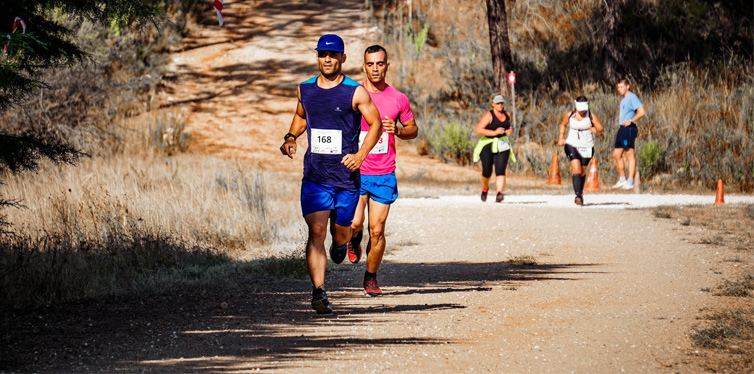
Practice Your Technique
Running is a lot more than just getting outdoors and hitting the pavement. That may work for recreational runners, but serious and competitive runners need a bit of an edge. This can be achieved by practicing a good running technique. The correct technique involves a number of factors, including posture, gait and breathing correctly. You should look tall and lean when you run. This is where good posture comes in. You then need to look at your gait. Look at the way your foot hits the ground when you run. Find the most natural and comfortable one for you and try and lengthen your stride for part of your run, then try quicker, shorter steps as well. Breathing is also of crucial importance. Try to keep your breathing deep and steady, but also look at alternating to short and shallow breathing as well. As a runner, you’ll face different challenges so it’s good to practice different techniques so you can adjust as needed.
Go For A Swim
Swimming is a fantastic way to get into shape and stay in shape. It is comfortable and no impact, making it a perfect workout in-between days when you put your body through its paces. One of the other major benefits of swimming is that it is a great way to incorporate the breathing techniques required for running. Swimming is a great way to get your lungs working and when you can get your lungs to work at a good capacity, you’ll also be able to learn how to breathe correctly when you engage in running at any speed. So get your swimming trunks and swimming goggles and start your swimming sessions.
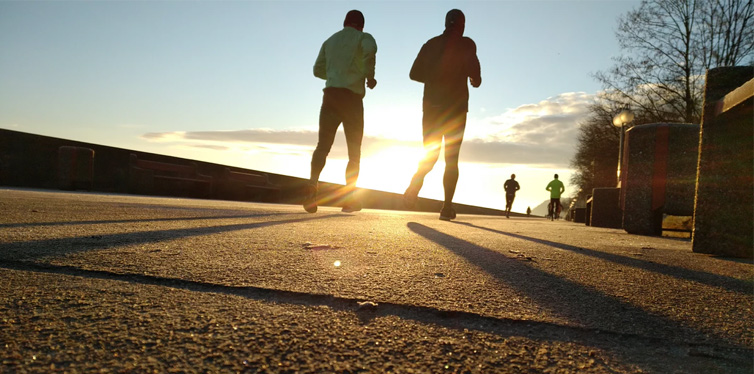
Get On The Treadmill
You may be thinking about the usefulness of a treadmill when you are running outdoors every day. Believe it or not, there is a practicality to getting on the treadmill. First and foremost, you can program the treadmill to measure your steps, distance, heart rate and the time you actually run. Secondly, a treadmill can be adjusted to increase or decrease your desired speed and you can also adjust the resistance of the treadmill to emulate running uphill or downhill. This means you have the ability to challenge your legs and alternate your workouts so you don’t get used to the same pace. The other big advantage is that the treadmill means you will never have to miss a run due to adverse weather conditions.
Lose Some Weight
Imagine yourself carrying a heavy bag while you try to walk or run. It may seem easy at first, but after a while, that extra weight will slow you down. The same applies to your body weight. Those extra pounds may not seem like a burden at first, but if you’ve ever been overweight, you’ll know that excess weight will eventually slow you down or, at the very least, make it difficult for you to run. Losing some of that excess weight will make all the difference in helping you run faster, and bring with it many health benefits. You’ll also take a whole lot of strain off of your feet as you will be minimizing the impact of a heavier frame constantly hitting the road.
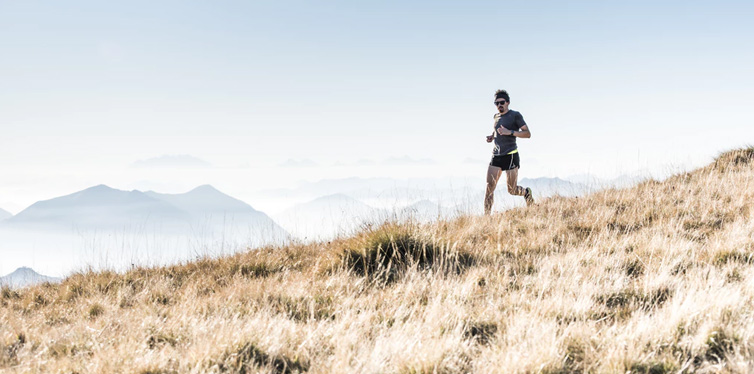
Add Some Weights
While losing excess body weight is advantageous for runners, adding weights when training is also beneficial for increasing speed. Weight training is a great way to improve overall strength. If you don’t have a variety of weights at home you can work with, hit the gym and incorporate them as part of a HIIT (high-intensity interval training) session. You can also strap on some ankle weights when you go for a run to help you strengthen your leg muscles and improve the power in your legs. If you can run well with weights strapped to your ankles, you’ll certainly be able to run fast and for longer without them over time. These weights will offer you a little bit of resistance which will go a long way to improve your speed a lot faster than not using them at all. Or you can wear a weighted vest to add some weight.
Improve Your Diet
As with all types of physical activity and running in particular, you need to give your body the right fuel to work with. Loading up on processed foods and unhealthy carbs will not deliver the right nutrients and, if anything, can slow you down considerably. Running can be punishing on your body so a diet high in lean protein will give your muscles the nutrients they need to stay strong. But protein will also help your body recover from the harsh treatment involved in training. Lots of fruit and vegetables are also great for your general health and will give your body all the essential nutrients needed to stay healthy and maintain an active body. Also, limit the amount of sugar you consume. Small amounts, like you’d get from eating dark chocolate will give you a great energy boost. A lot of sugar may boost your energy levels, but this boost will only be temporary and once you crash, it will be difficult to continue at the pace you’re usually running and training at. Most of your sugar should come from natural sources like fruit and honey.
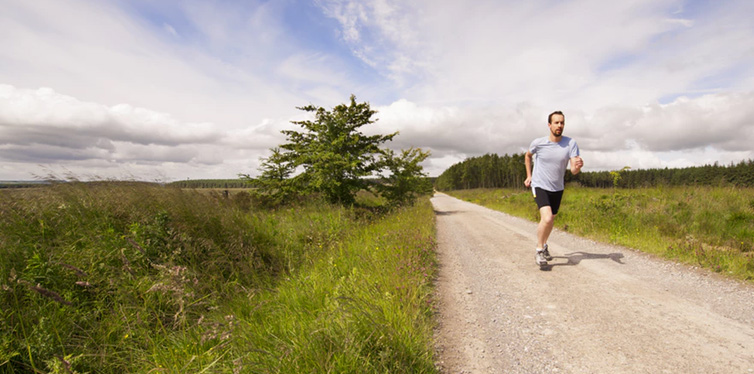
Strengthen Your Core
Most people only see running as an activity that works the arms and the legs. They often overlook their core muscles which makes them more susceptible to injury. A strong core is crucial at aligning your spine and pelvic muscles which gives runners an overall edge. A strong core also lessens a runner’s vulnerability to injury and helps them to run more efficiently. It’s also worth considering that a strong core promotes good health and fitness in general. Yoga and Pilates are great for strengthening core muscles and are a great workout in between more rigorous ones when your body needs a little bit of a break without completely skipping a day of exercising. There are also some great exercises you can do in the comfort of your living room, and things like a rowing machine are exceptionally good for improving core strength.
Change The Terrain
Running along a long stretch of road for miles on end may seem like great running practice, but it’s not exactly challenging. The same type of run day in, day out is not only boring but after a while, you’ll feel like you’ve hit a rut. You need to challenge your body and continue strengthening your legs. Change the roads you run on. Head for the hills at least once or twice a week. Going uphill will be an enormous challenge for your legs and your running speed in general. Running downhill also gives you the opportunity to let gravity do its thing to let you run at a greater speed naturally. Once you master the incline of one hill, find a different one. These challenges are the best work out for your legs. Stronger legs can achieve greater speeds so find a few roads that take you up varying hills and you’ll not only have the means to improve your running speed, you’ll love the view from the top. Just make sure you have a proper footwear for the hills- like trail running shoes.

Keep Your Clothing Light
Lots of bulky clothing may be tempting, especially in cooler weather, but a full tracksuit limits your movements and adds unnecessary bulk. Running is strenuous and requires lots of freedom so keep your clothing light. In warmer weather, running shorts and a light tank top are ideal. As it gets cooler, you’ll be looking at warmer alternatives, like running jackets, but that doesn’t mean you should go for thick, bulky attire. There are lightweight thermal options you can wear. These pants and tops are form fitting with incredible elasticity which will give you the freedom of movement you need to run the distance at the speeds you are aiming for. Many are also made with thermal technology. They are thin and light, but will still keep you warm, even if you choose to run on a snowy day. The other benefit of such clothing is that they have the ability to wick sweat away from your body, keeping you dry as you run.
Invest In Proper Running Shoes
When you go for a run at your local running track or park, it’s tempting to deck out in stylish running gear, and that includes running shoes. While you should need to forgo on looking good, comfort and support are infinitely more important. In fact, the right running shoes can make, or break you. You need a pair of running shoes that are light, yet still quite sturdy to give you lots of stability as you run. You also need them to be very flexible and breathable. Look for shoes with a little bit of wiggle room for your toes. Your feet will start to swell after a while so that little bit of space for your toes will be your salvation. Also look at seamless running shoes. It may not seem important, but those seams and stitches will start to rub against your feet causing discomfort. Look for shoes that cradle your feet without being too tight. The rubber sole at the bottom should have good cushioning to minimize the effects of constantly impacting on the hard surfaces most runners choose to practice on. If you plan on running in bad weather, make sure you invest in waterproof running shoes or even Gore Tex running shoes.
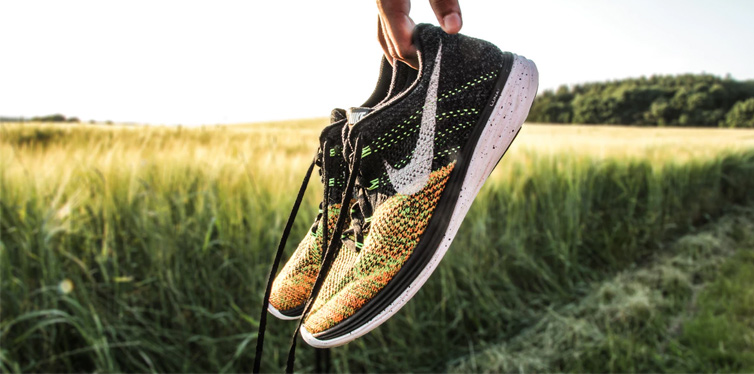
Find A Good Speed Workout
When you go out for a run you should give yourself a challenge. Spot a landmark like a building or a tree a couple of hundred meters ahead of you and sprint to it as fast as you can. Then you can spot another one and jog to it at a less vigorous pace. Change your pace every so often but you can turn it into a fun game for yourself. This type of speed training is called Fartlek, which is Swedish for “speed play”. Unlike a regulated or scheduled run where you alternate your speed every 5 or 10 minutes or so, this type of speed interval training is a little more spontaneous. This flexibility makes the run a little more interesting and you can implement it anywhere. It works at improving your speed and makes it challenging to run in a unique way. It will also do wonders at improving your endurance and stamina.
Get Enough Sleep
Running puts a lot of exertion on your body and while you may enjoy the challenge and the burn that comes with running, your body needs time to rest so you can do it all again the following day. Many runners like to get up at the crack of dawn to go for a run and that’s fine. The roads and tracks are less crowded and as most people need to work, it’s the ideal time to get in your running practice before you start your workday. If you’re an early riser, make sure you also go to bed at the right time so that you are getting enough sleep. A rested body is always going to perform better than a tired one. When you are fully rested, your body has the energy to do more and you’ll mentally feel more prepared for your run. If you’re too tired, you may lack the motivation to run or you may even find excuses to skip them for a day or two.


